Abstract
Acute lower respiratory tract infections are a common cause of morbidity and mortality in children in the less developed countries. Considering the urgent need for rational protocols for the management of these infections in children and how little is known about the clinical signs that might predict the need for antibiotic therapy in a primary health care setting, a prospective study of the clinical signs in 200 paediatric outpatients presenting with a cough, 100 age-matched controls without cough, and 50 children admitted to hospital with pneumonia was carried out.
In children with cough, a respiratory rate greater than 40 or 50 per minute (or a qualitative impression of tachypnoea) is probably the best indicator of the need for starting antibiotic treatment by primary health workers. The presence of fever appeared to be a poor guide to the need for antibiotic therapy. The presence of chest indrawing is, however, a reliable indication that a child with cough should be admitted to a health centre or a hospital. Further prospective studies are needed to determine the ability of these clinical signs to predict the course of these infections.
Full text
PDF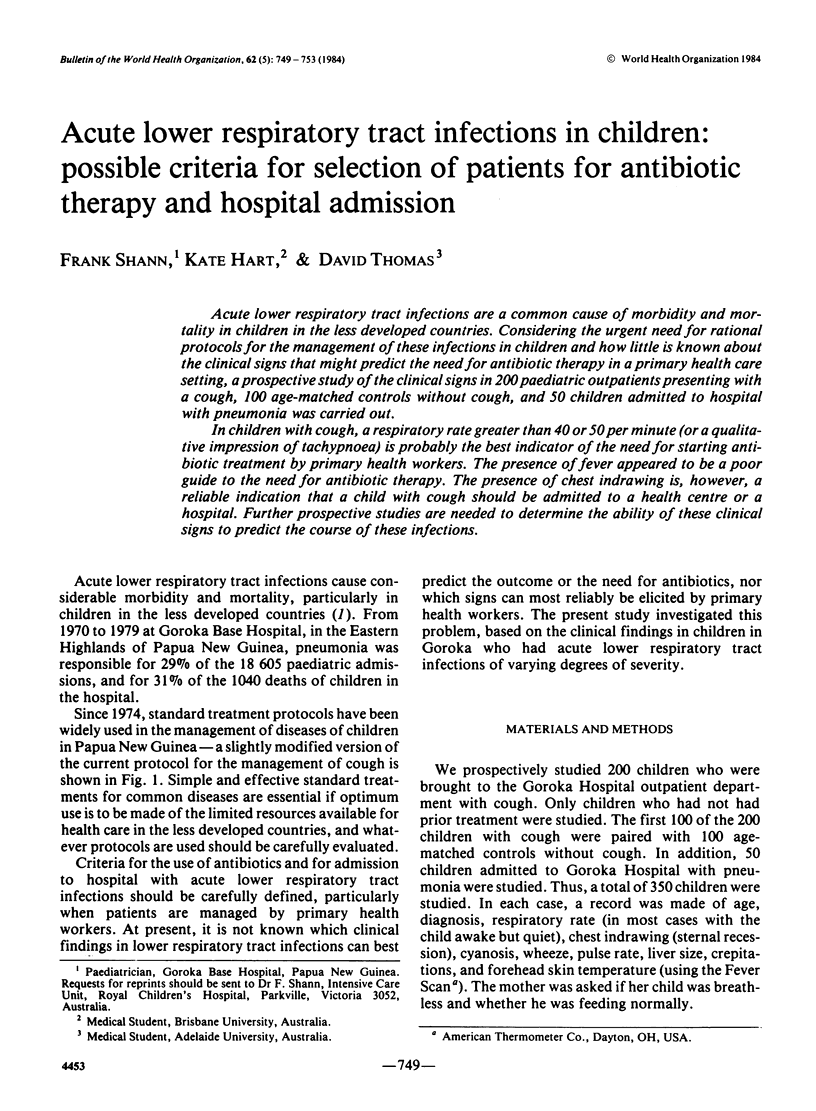
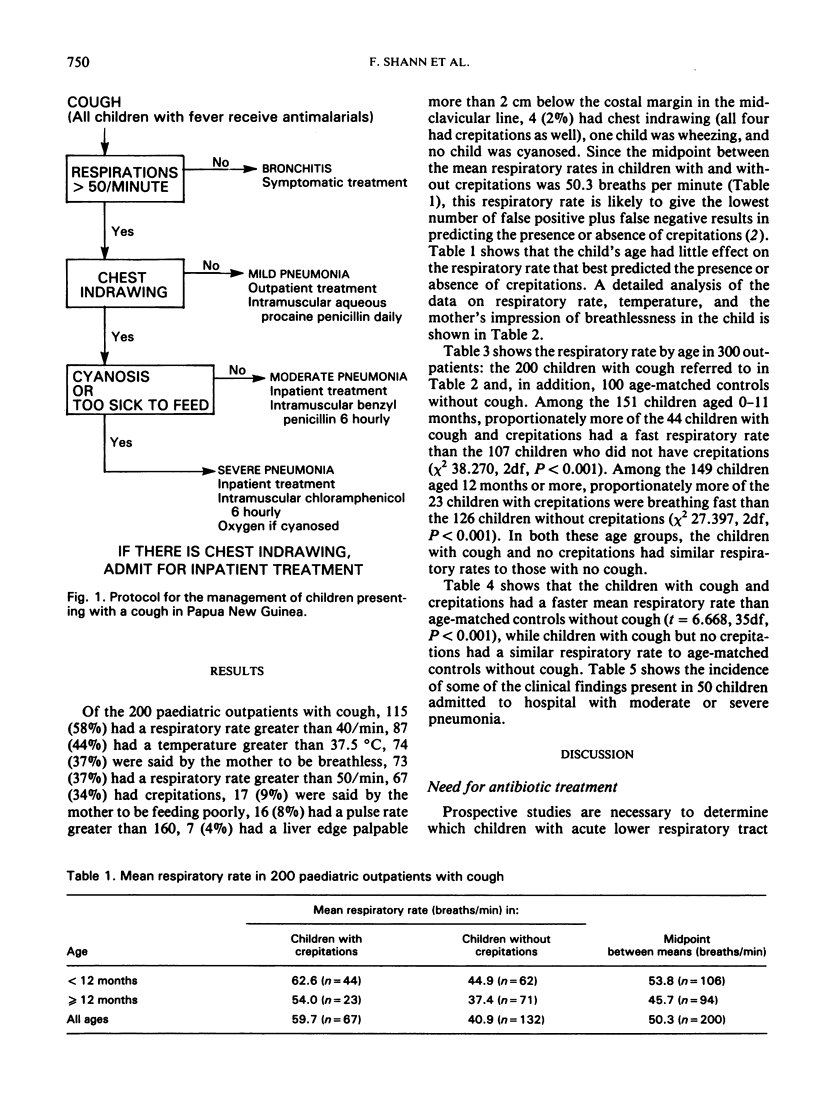
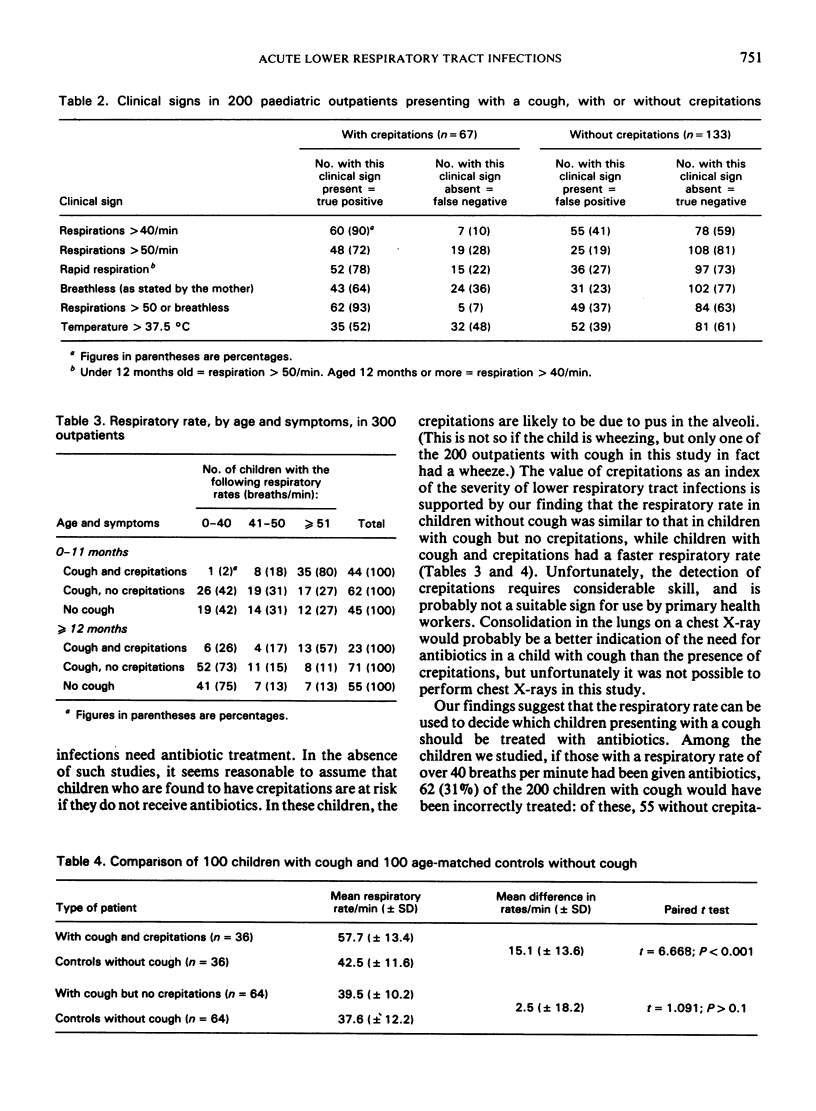
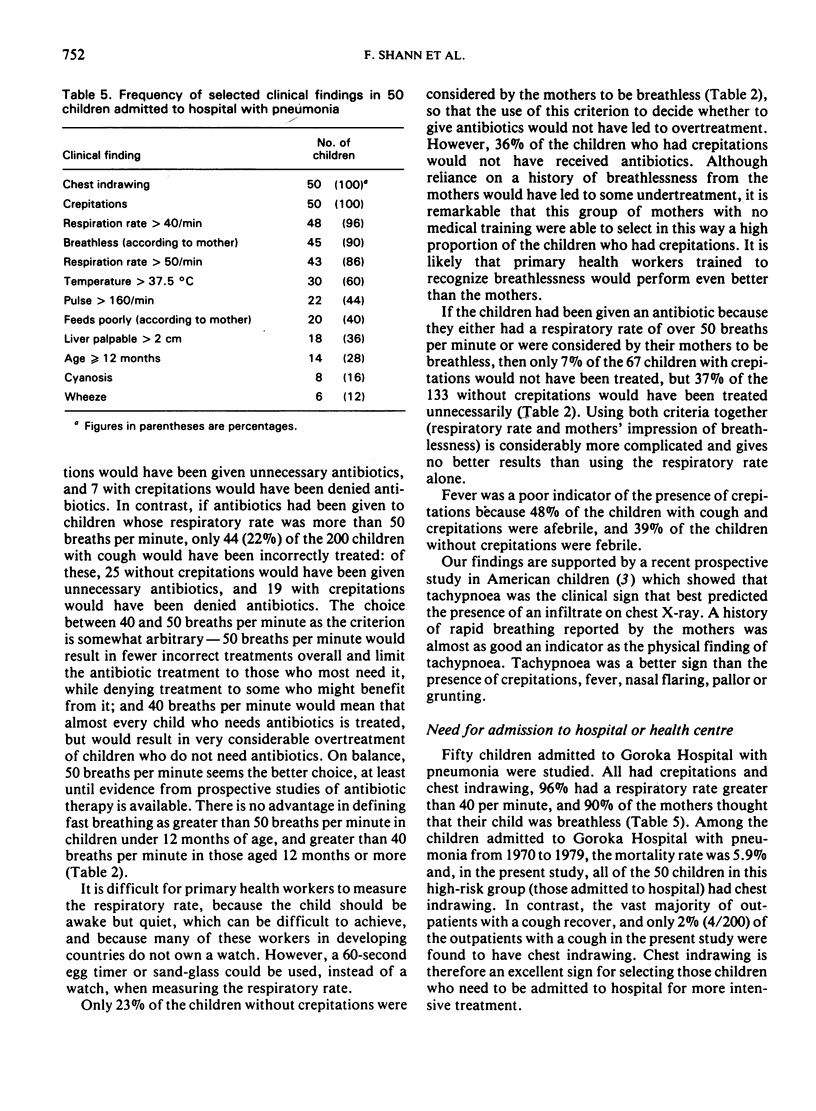
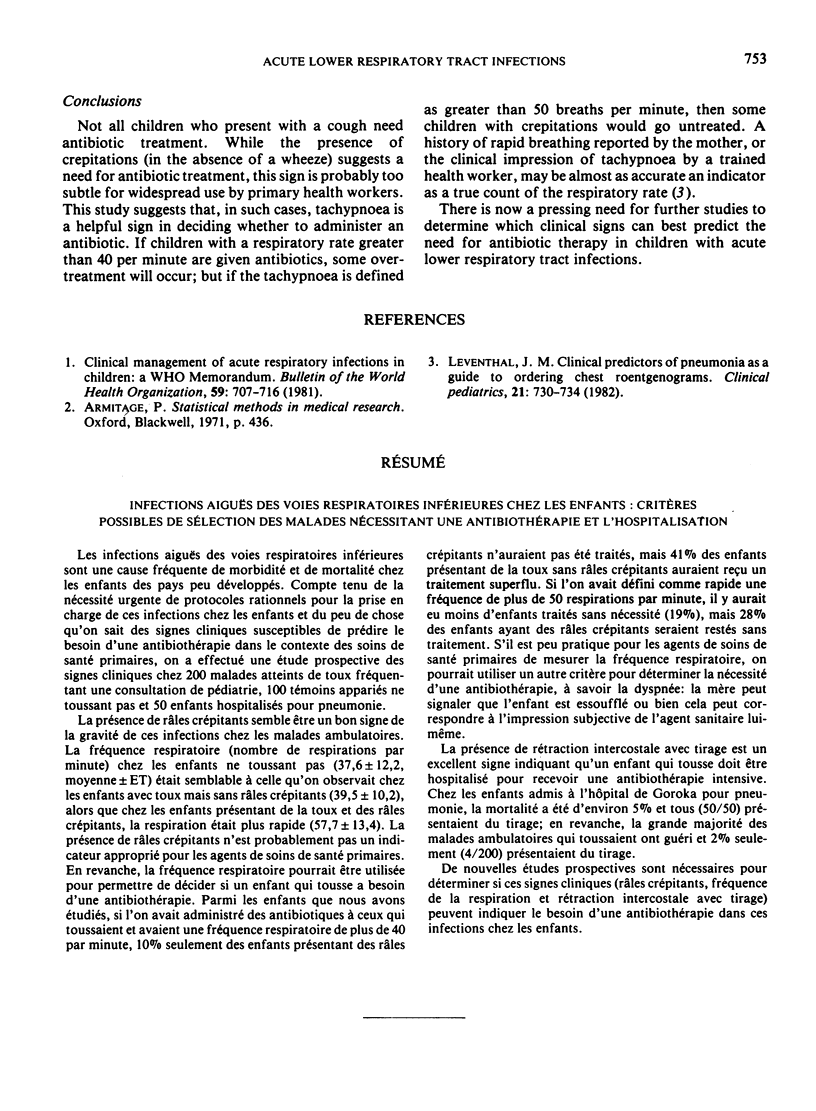
Selected References
These references are in PubMed. This may not be the complete list of references from this article.
- Leventhal J. M. Clinical predictors of pneumonia as a guide to ordering chest roentgenograms. Clin Pediatr (Phila) 1982 Dec;21(12):730–734. doi: 10.1177/000992288202101205. [DOI] [PubMed] [Google Scholar]


